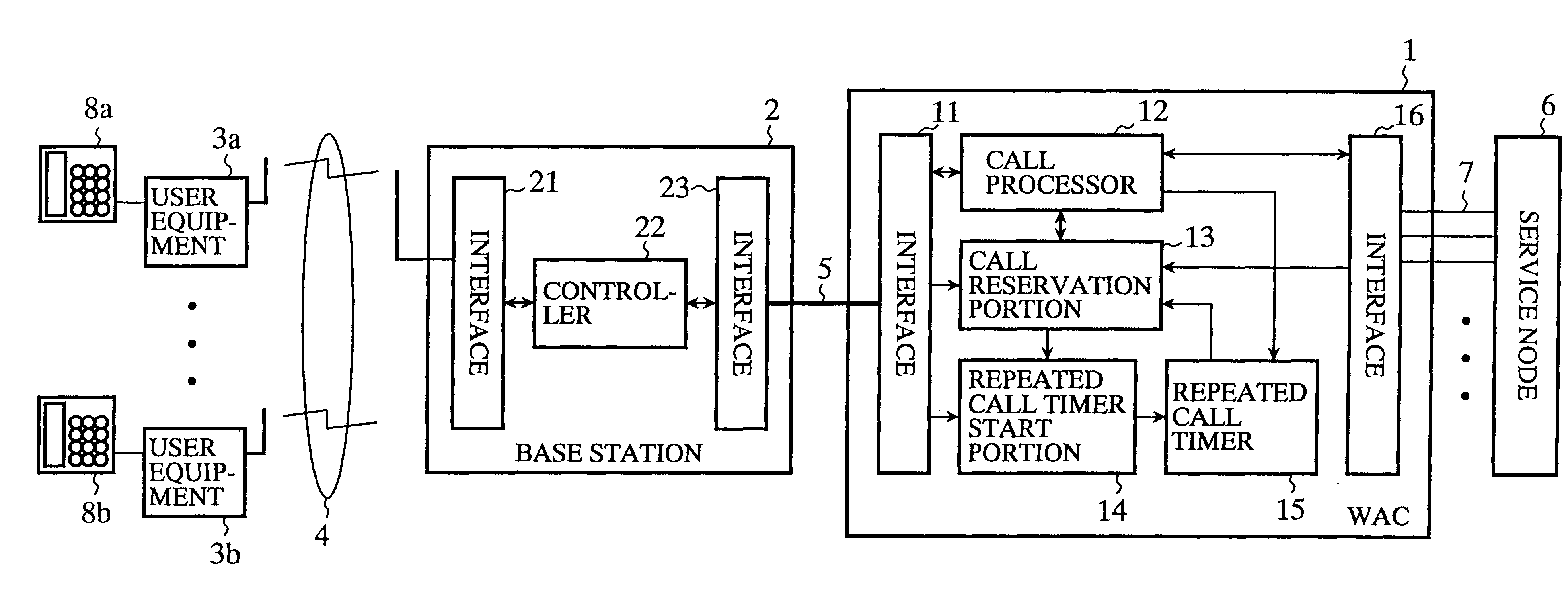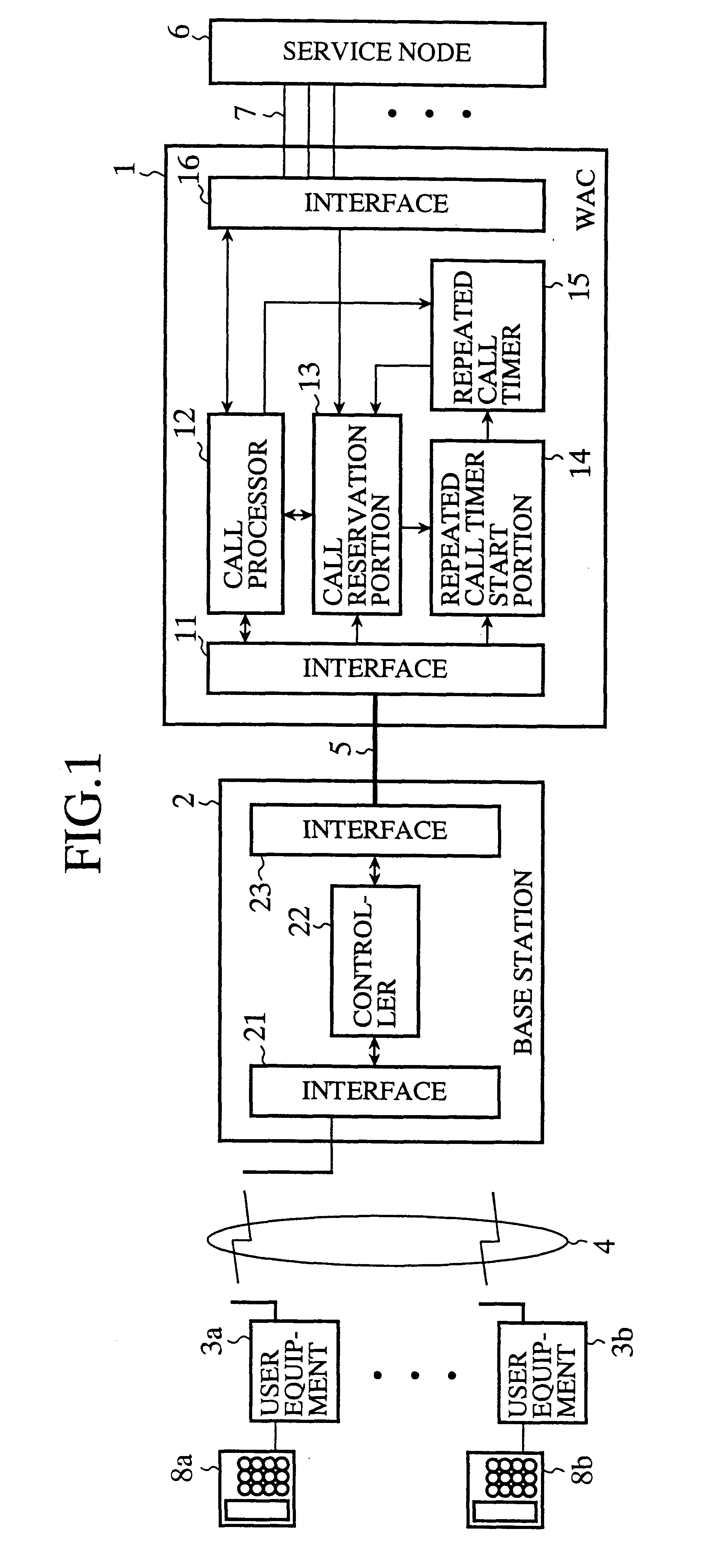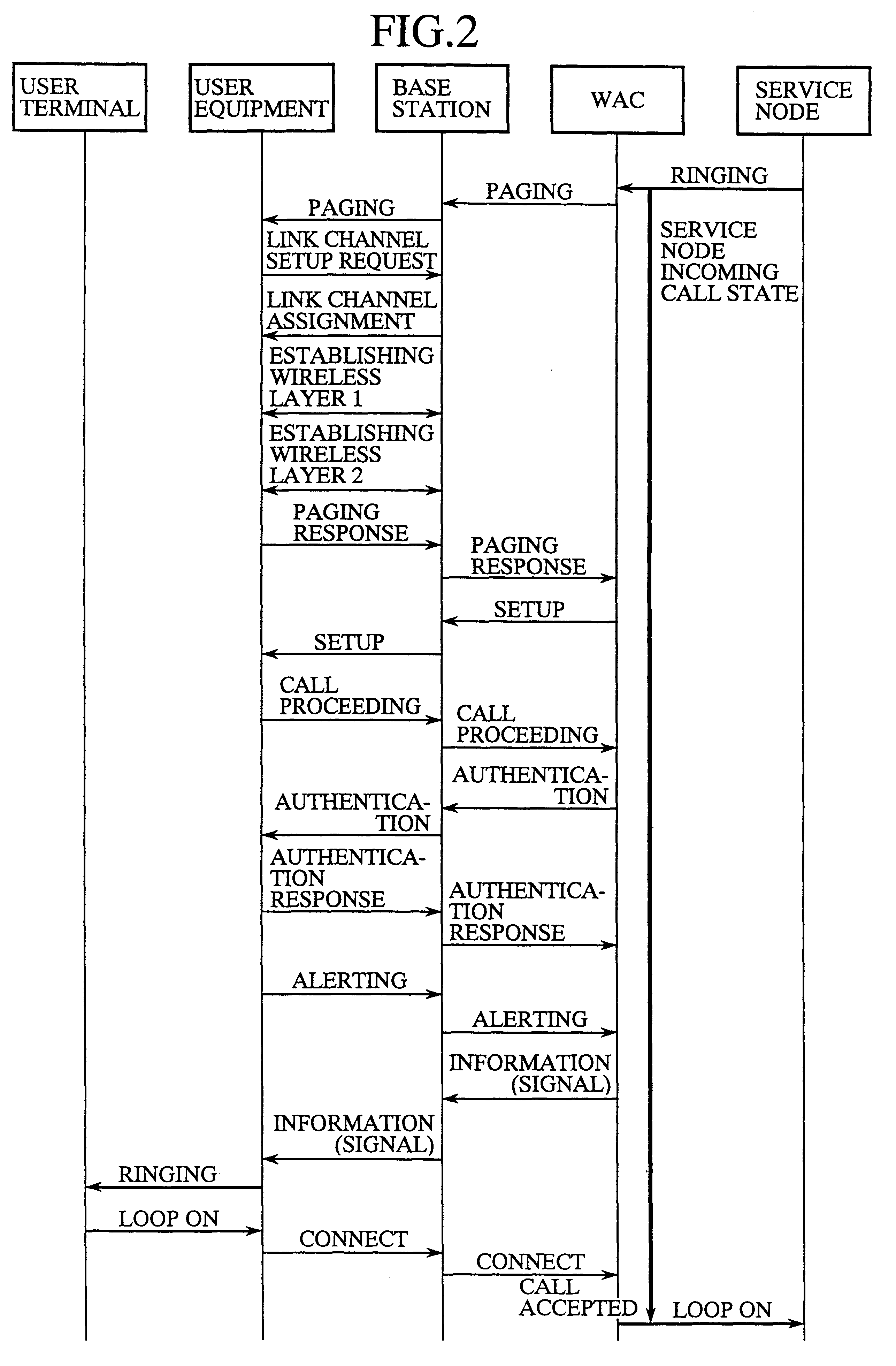Access network system capable of reducing call loss probability
a network system and call loss technology, applied in the field of access network system, can solve problems such as increasing call loss
- Summary
- Abstract
- Description
- Claims
- Application Information
AI Technical Summary
Benefits of technology
Problems solved by technology
Method used
Image
Examples
first embodiment
FIG. 3 is a sequence diagram illustrating the operation of the access network system in accordance with the present invention. When the WAC 1 receives a ringing (call request) from the service node 6, the call processor 12 of the WAC 1 sends a paging message to the called user equipment 3 via the base station 2. Receiving the paging message, the base station 2 transmits it to the user equipment 3 via the wireless circuit 4. Receiving the paging message from the base station 2, the user equipment 3 sends to the base station 2 a link channel setup request for requesting setup of a wireless channel between them.
If the interface 21 of base station 2 does not hold, when it receives the link channel setup message from the user equipment 3, i.e., a request for a wireless channel to be assigned, then the controller 22 sends to the user equipment 3 a link channel assignment rejection indicative of being unable to setup a wireless channel, and to the WAC 1 an idle wireless channel absent mess...
embodiment 2
FIG. 4 is a sequence diagram illustrating a second embodiment of the access network system in accordance with the present invention. The sequence is the same as that of FIG. 3 from the transmission of the ringing from the service node 6 to the WAC 1 up to the transmission of the idle wireless channel absent message from the base station 2 to the WAC 1 when the base station 2 cannot detect an idle wireless channel. When the WAC 1 receives the idle wireless channel absent message from the base station 2, the call reservation portion 13 of the WAC 1 sets the current incoming call in the call reservation state, and activates the repeated call timer 15 using a timer value stored in the repeated call timer start portion 14 in advance.
If the current subscriber line 7 of the service node is still in the incoming call state when the repeated call timer 15 completes counting, the call reservation portion 13 of the WAC 1 releases the call reservation state, and the call processor 12 carries ou...
embodiment 3
FIG. 5 is a sequence diagram illustrating the operation of a third embodiment of the access network system in accordance with the present invention. If the trunk line 5 between the WAC 1 and base station 2 that accommodates the called user equipment 3 is busy when the WAC 1 receives the ringing from the service node 6, the call reservation portion 13 of the WAC 1 sets the current incoming call in the reservation state, and the interface 11 of the WAC 1 starts idle channel monitoring to detect whether any channel in the trunk line 5 becomes idle. If the interface 11 of the WAC 1 detects an idle channel in the trunk line 5, the call reservation portion 13 releases the call reservation of the current incoming call, and the call processor 12 carries out the normal call processing as shown in FIG. 2, thereby achieving the incoming call successfully.
In the third embodiment, if the WAC 1 cannot obtain an idle channel in the trunk line 5 between the WAC 1 and base station 2 when the service...
PUM
 Login to View More
Login to View More Abstract
Description
Claims
Application Information
 Login to View More
Login to View More - R&D
- Intellectual Property
- Life Sciences
- Materials
- Tech Scout
- Unparalleled Data Quality
- Higher Quality Content
- 60% Fewer Hallucinations
Browse by: Latest US Patents, China's latest patents, Technical Efficacy Thesaurus, Application Domain, Technology Topic, Popular Technical Reports.
© 2025 PatSnap. All rights reserved.Legal|Privacy policy|Modern Slavery Act Transparency Statement|Sitemap|About US| Contact US: help@patsnap.com



